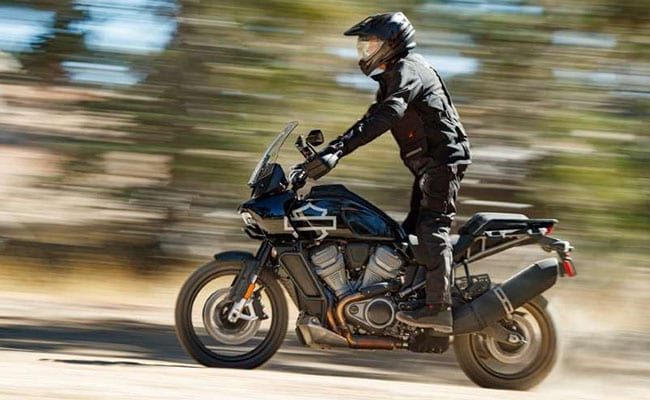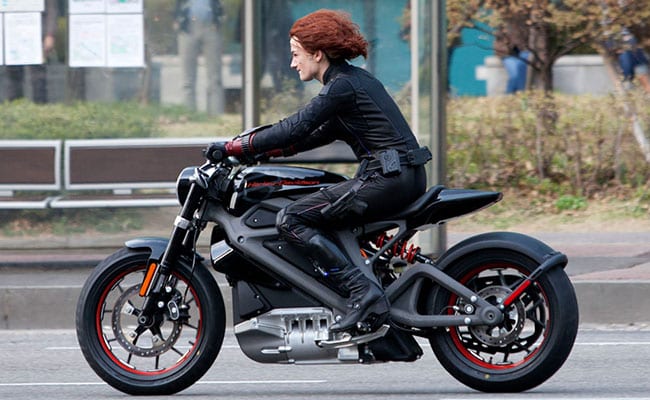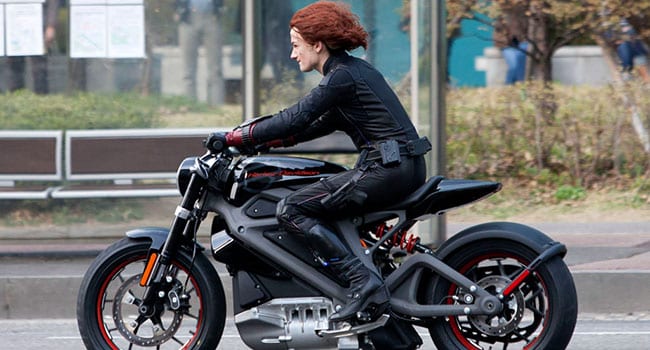
Harley-Davidson is introducing a dual-purpose adventuring bike called the Pan America. This is specifically designed for long-distance touring. It’s the kind of bike BMW, KTM and others have been building for years
 When we think of Harley-Davidson, what’s the first thing that comes to mind?
When we think of Harley-Davidson, what’s the first thing that comes to mind?
That unmistakable rumble that drives some people to distraction but is music to the ears of hard-core enthusiasts. It’s the company’s trademark and biggest source of controversy.
It’s funny then that the all-electric Harley LiveWire is front and centre on the company’s website. This motorcycle makes not a peep, aside from a high-pitched whine that’s actually engineered into the final drive. It goes about its business quietly and efficiently – not to mention being emission-free. Yes, it does make some noise, but of a completely different type.
The LiveWire is not a laid-back, king-size cruiser with saddlebags, windscreen and plenty of attitude. Instead, it’s a stripped down, bare essentials sport bike.
At first glance, it looks like a nicely styled corner-carver, with roughly the same proportions as a Ducati Monster or Buell Lightning. It has a longitudinally-mounted alternating current (AC) electric motor fed by a lithium-ion battery pack. It develops an estimated 75 horsepower.
There are no gears to change and no clutch. You simply get aboard, thumb the start button, twist the throttle and go.
Two riding modes are offered on the handlebar-mounted touch screen: Range for touring and Power for around-town point and squirt traffic. Both supply an abundance of takeoff power and Harley says the LiveWire will go from a standing start to freeway speed in about four seconds.
That’s one of the nice things about electric power: instant torque, with no spooling up or hammering through the gears to get somewhere. That may or may not be a good thing, depending on your point of view.
In the saddle, it feels kind of weird not to have to shift gears or use a clutch lever. In fact, you don’t have to use the brakes much either, since the LiveWire has a regenerative engine brake function. Backing off on the throttle slows the bike down in a heartbeat. But the brakes are there, regardless: twin-piston discs front and back.
Like all sport bikes, the LiveWire is not large and an all-day ride (which it can’t do at this point anyway) would get a little cramped after a few hours. Estimated riding range is about 80 km, with an approximate recharge time of three and a half hours with a 220-volt charging unit.
That’s not all that’s going on at the Milwaukee company. It’s completing research and development on a pair of all-electric, bicycle-based city bikes. The company says they “are built with the routine and rad in mind. They re-imagine the urban commute and make off-road excursions more accessible – unlocking the city in the process.”
As well, Harley is introducing a dual-purpose adventuring bike called the Pan America. This is specifically designed for long distance touring. It’s the kind of bike BMW, KTM and others have been building for years.
Also new is a hard-core city sport bike called the Bronx, a “middleweight” aimed at hipster roustabouts who like to go fast from stoplight to stoplight and make a scene on downtown streets.
It’s no secret that this company’s traditional customer base is fading fast. Harley swears it’s not abandoning its classic air-cooled V-twin engine configuration, and still knows which side its bread is buttered on.
But rider demographics are changing everywhere and a new breed of consumer is emerging, especially in North America.
Harley’s traditional core group of buyers are hanging up their chaps. Witness the company’s recent introduction of its small-displacement Street models, aimed at younger riders, with their liquid-cooled engines and emphasis on rideability as opposed to attitude.
Changes are definitely in the wind at Milwaukee.

The all-electric Harley-Davidson LiveWire is front and centre for the company. This motorcycle goes about its business quietly and efficiently – not to mention being emission-free. The LiveWire is a stripped down, bare-essentials sport bike
Ted Laturnus writes for Troy Media’s Driver Seat Associate website. An automotive journalist since 1976, he has been named Canadian Automotive Journalist of the Year twice and is past-president of the Automotive Journalists Association of Canada (AJAC).
The views, opinions and positions expressed by columnists and contributors are the author’s alone. They do not inherently or expressly reflect the views, opinions and/or positions of our publication.


